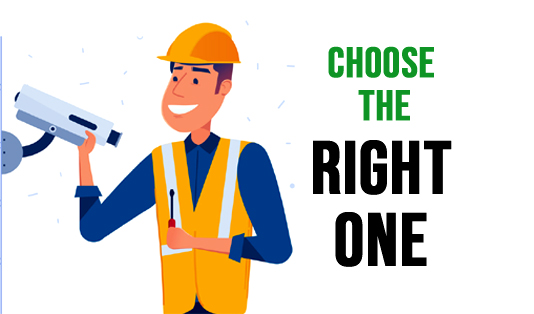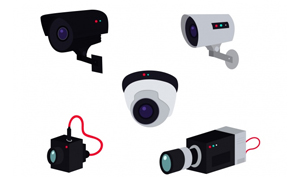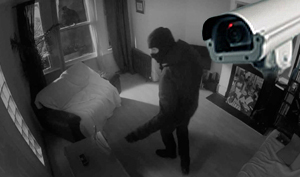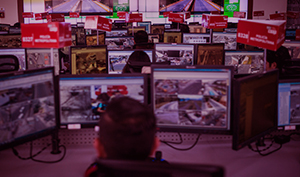It is believed that a burglary is committed every 40 seconds in the UK and over 95% of robberies are not solved. CCTV cameras can act as a major deterrent to crime, but if they’re placed in the wrong areas, you may not be as protected as you think. Here are a few tips for placing your CCTV cameras where they will do their best work.
Install CCTV cameras at the front door
You might think that burglars always sneak into side entrances, but statistics show that over 34% of criminals use the front door. So, you definitely need to install a CCTV camera at your front door. Actually, this is the most important spot to place a security camera as it will keep tabs on everybody that comes in and out of your home.
If possible, place your CCTV camera at the second-floor level to avoid a burglar from knocking out your camera. If you only have one level, enclose your front door security camera in a mesh wiring to protect it from tampering.
Locate security cameras at the back and side doors
Around 22% of criminals use the back door to enter a house, so you’d definitely benefit from using a camera here. To know who enters and exits, install security cameras near the secondary doors, especially if one of them is used more than your front door. Actually, it’s good to attach security cameras to every door you have in case of intrusion. Also, try to keep it out of the reach of humans or things they can throw at the security camera.
Put cameras near garage and driveway
A CCTV camera pointed at your garage or driveway helps you monitor your bikes, cars, tools and everyone that handles them. If your garage is detached from your home, a security camera helps you stay connected. If the garage is attached, the extra security camera monitors another possible entryway into your home. You might want to install a camera at the gate of your driveway to spot an intruder attempting to get in.
Placing cameras in common areas
You can install CCTV cameras in gathering points, such as the kitchen or living room to monitor your kids, babysitter, pets and to keep an eye on household help like cleaners and repairmen. In addition, install cameras in rooms that have larger ground-floor windows so that you can see if anyone uses them as a break-in point.

Areas you should not install a security camera
Here are the areas where you shouldn’t place a security camera:
Places that violates other’s privacy
As laws regarding security cameras and their privacy vary from state to state, it’s wise to check local laws in order to ensure that you won’t have any problem in the future. Generally, homeowners are allowed to place outdoor security cameras and it’s fine to capture your neighbour’s front-facing property. However, legal problems arise if you point your cameras towards areas where your neighbour has an exception of privacy or if you use the footage for other purposes. It’s important to note that these rules apply to video surveillance and audio recording without knowledge is illegal in most circumstances.
Bedrooms and bathrooms
It’s important to keep an eye on small kids and seniors, but some areas of the house, such as bedrooms have a warranted exception of privacy. Luckily, technological advances now provide you with plenty of alternatives. Baby monitors can be a smart choice for a very young kid’s room, while personal medical alert systems are strong choices for elderly folks.
Tips for outdoor security camera placement
Ensure that the cameras are not pointed directly at the sun
Sunlight causes glare and high contrast in the video footage, making it hard to identify suspects in case of any intrusion. Consider the movement of the sun and install your cameras away from direct sunlight.
Sunlight causes glare and high contrast in the video footage, making it hard to identify suspects in case of any intrusion. Consider the movement of the sun and install your cameras away from direct sunlight.
Install cameras 8 – 10 feet above the ground
Height between 8 to 10 feet is low enough to capture small details but high enough to be out of easy reach of burglars and criminals.
Decide whether the camera should be visible or hidden
Visible CCTV cameras act as an effective deterrent to crime, but they are also targets for vandalism and robbery. Some homeowners prefer to install a fake camera and back it up with a real one that’s slightly more concealed, while others place a hard casing around the camera that makes it hard for burglars to damage it.








